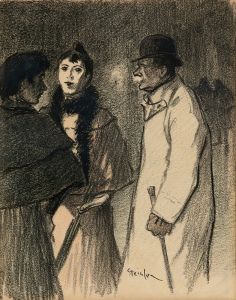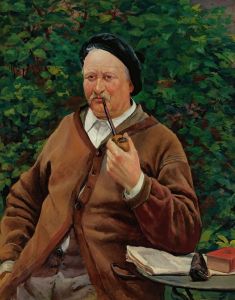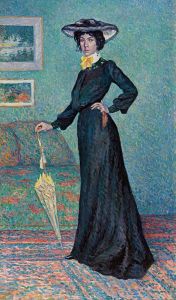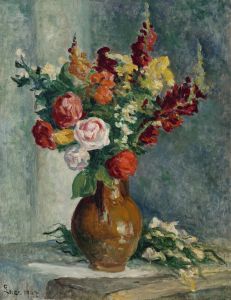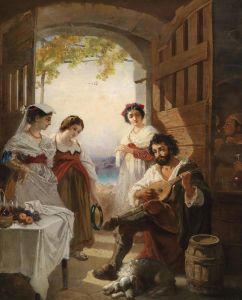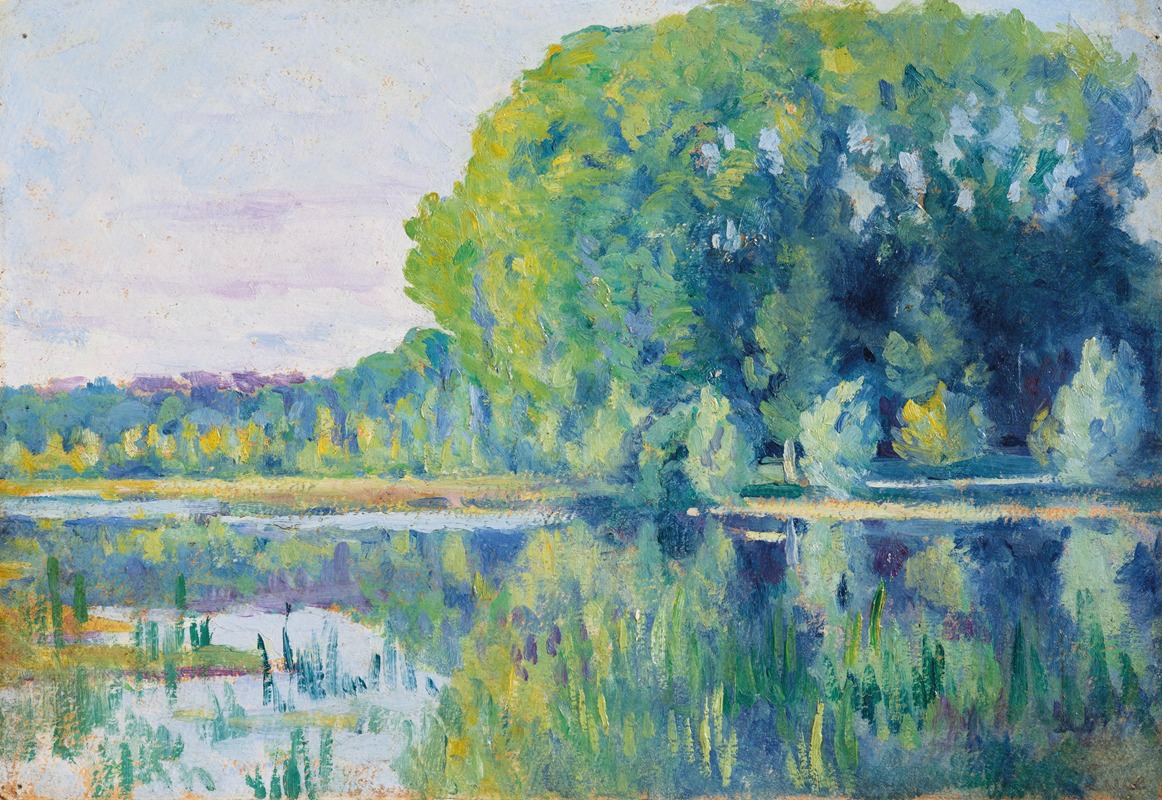
Moulineux, L’Etang
A hand-painted replica of Maximilien Luce’s masterpiece Moulineux, L’Etang, meticulously crafted by professional artists to capture the true essence of the original. Each piece is created with museum-quality canvas and rare mineral pigments, carefully painted by experienced artists with delicate brushstrokes and rich, layered colors to perfectly recreate the texture of the original artwork. Unlike machine-printed reproductions, this hand-painted version brings the painting to life, infused with the artist’s emotions and skill in every stroke. Whether for personal collection or home decoration, it instantly elevates the artistic atmosphere of any space.
Maximilien Luce was a prominent French Neo-Impressionist painter known for his pointillist technique and his depictions of urban and rural scenes. Born in Paris on March 13, 1858, Luce initially trained as an engraver before turning to painting. He became associated with the Neo-Impressionist movement, which was characterized by the use of small, distinct dots of color applied in patterns to form an image. This technique, known as pointillism, was pioneered by Georges Seurat and Paul Signac, with whom Luce was closely associated.
One of Luce's notable works is "Moulineux, L’Etang," which exemplifies his mastery of the Neo-Impressionist style. The painting captures a serene pond scene, likely located in the region of Moulineux, a place that inspired several of Luce's works. The painting is characterized by its meticulous application of color and light, creating a vibrant and harmonious composition that reflects the tranquility of the natural setting.
Luce's approach to painting was deeply influenced by his political beliefs. As an anarchist, he was committed to depicting the lives and environments of ordinary people, often focusing on working-class subjects and landscapes that were accessible to the public. This ideological stance is reflected in "Moulineux, L’Etang," where the emphasis is on the beauty of the natural world, free from industrialization and urbanization.
The painting employs the pointillist technique to great effect, with Luce using small, distinct dots of color to build up the image. This method allows for a vibrant interplay of colors, as the viewer's eye blends the individual dots into a cohesive whole. The result is a luminous and dynamic scene that captures the changing effects of light on the water and surrounding foliage.
Luce's work, including "Moulineux, L’Etang," is often noted for its atmospheric quality and attention to detail. His ability to convey the mood and essence of a place through color and composition is a hallmark of his style. The painting reflects Luce's interest in the natural world and his desire to capture its ephemeral beauty.
Throughout his career, Luce remained committed to the principles of Neo-Impressionism, even as other artists moved away from the style. His dedication to the technique and his ability to adapt it to a variety of subjects ensured his place as a significant figure in the movement. "Moulineux, L’Etang" is a testament to his skill and vision, showcasing his ability to create a sense of peace and harmony through his art.
Maximilien Luce's contributions to the art world extend beyond his paintings. He was also an active member of the artistic community, participating in exhibitions and supporting fellow artists. His work continues to be celebrated for its technical precision and emotional depth, and "Moulineux, L’Etang" remains an enduring example of his artistic legacy.






